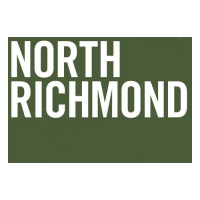The Bay Area Enclave Where They Almost Never Catch Killers

Since 2010, people have been killed nine times as often in unincorporated North Richmond in the Bay Area as the neighboring city of Richmond, which has one of the nation's highest murder rates.
And almost no one gets caught.
The Contra Costa Times says that the 19 homicides in the 1.5-square-mile neighborhood works out to an average of 133 killings per 100,000 people annually. That compares most unfavorably to Richmond, one of the deadliest cities in America, where the rate is 19 per 100,000. Charges were filed in only five of the 19 homicides, and two of those were brought by an agency that doesn't patrol North Richmond.
Sixteen of the 19 homicide victims were African-American, although they make up just a third of the population. North Richmond had a much larger black population back in its heyday during and after World War II, when African-Americans migrated there from the South and Midwest looking for jobs and found them in nearby shipyards and refineries.
The area was known for its blues bars and the streets were filled with working-class families who weren't shooting at each other. The demographics began to shift in the 1970s, and Latinos now make up about half the population, but by then North Richmond was already beginning to decline. The area has a population of around 3,700 and is the poorest community in the county.
The Contra Costa Sheriff's Department, which is responsible for policing North Richmond, does not have much of a presence. And deputies must wait for backup before proceeding to the scene of a shooting, increasing the likelihood of escape. No one has been arrested in any of the five homicides since November 2012.
In contrast, Oakland police to the south made arrests in 29% of killings and Richmond arrested 47% since 2010. Both are relatively poor cities, but each has its own police force. That fact has prompted many in the community to favor annexation by Richmond, but that doesn't seem likely in the near future.
Many of the North Richmond killings are the result of clashes between competing gangs. Policing them hasn't been made any easier by budget cutbacks that have reduced the Sheriff's Department by 100 deputies since 2008.
While North Richmond does not benefit from having access to the Richmond police force, it does get to partake in the environmental hazards provided by the city's refineries and other industrial development. The North Richmond Center for Health was built with funds from a settlement with General Chemical after a 1993 fire treated the community to a dose of sulphuric acid.
A 2012 fire and explosion at the Chevron refinery in Richmond engulfed the area in choking black smoke and potentially dangerous sulfuric acid and nitrogen dioxide fumes that sent 15,000 people to hospitals. Five refineries ring the area, along with three chemical plants, eight Superfund sites and lots of other noxious dumps, rail yards and marine terminals.
The lack of environmental justice goes a long way in explaining why North Richmond has a median income of $36,875, less that half the county average and significantly less than beleaguered Richmond. High unemployment, heavy pollution and an underfunded police presence are recipes for disaster, borne out by North Richmond's high murder rate and wretched record of solving homicides.
‒Ken Broder
To Learn More:
North Richmond: Most Killings Go Unsolved in Tiny Enclave (by David DeBolt and Robert Rogers, Contra Costa Times)
A Journey Into North Richmond (by Robert Rogers, Richmond Confidential)
California City Wages War against “Environmental Racism” (by Michael Okwu, Aljazeera America)
Pollution, Poverty, People of Color: The Factory on the Hill (by Jane Kay and Cheryl Katz, Environmental Health News)
Richmond Protests and Sues Chevron on Anniversary of Devastating Refinery Fire (by Ken Broder, AllGov California)
- Top Stories
- Controversies
- Where is the Money Going?
- California and the Nation
- Appointments and Resignations
- Unusual News
- Latest News
- California Forbids U.S. Immigration Agents from Pretending to be Police
- California Lawmakers Urged to Strip “Self-Dealing” Tax Board of Its Duties
- Big Oil’s Grip on California
- Santa Cruz Police See Homeland Security Betrayal in Use of Gang Roundup as Cover for Immigration Raid
- Oil Companies Face Deadline to Stop Polluting California Groundwater





